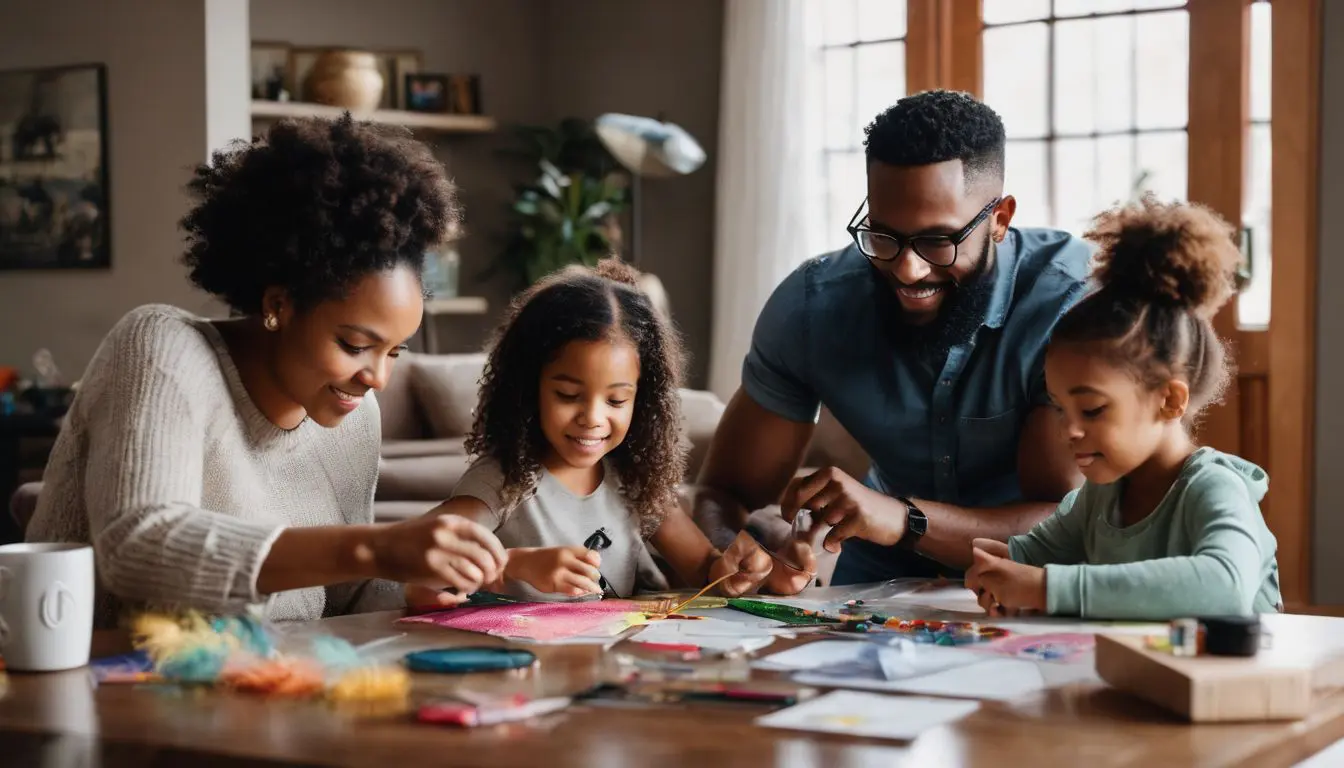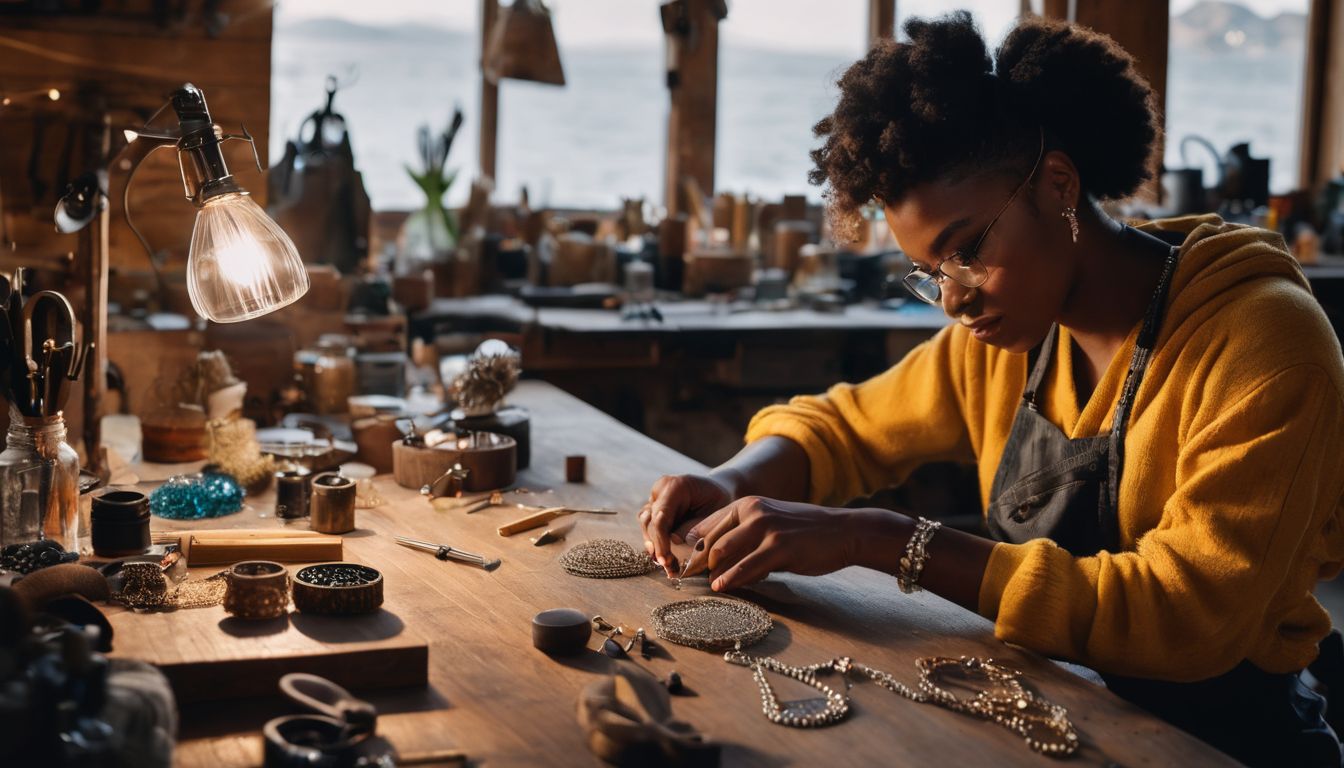Benefits of Art Education

Art education is an important component of a well-rounded education.
Although art education is frequently the first subject to be cut from school budgets, it is critical to ensure that it is prioritized.
This article will go over the 11 benefits of art education for students as supported by research and studies from credible sources.
- Benefits of Art Education
- Art Education Benefits to Students
- 1. Enhances Creativity
- 2. Boosts Academic Performance
- 3. Improves Fine Motor Skills
- 4. Enhances Cultural Awareness
- 5. Promotes Self-Expression and Confidence
- 6. Reduces Stress and Anxiety
- 7. Develops Collaboration Skills
- 8. Increases Artistic Appreciation
- 9. Encourages Risk-Taking
- 10. Develops Problem-Solving Skills
- 11. Fosters Personal Growth
- Final Thoughts on the Benefits of Art Education
- References:
Affiliate Disclaimer: This post may contain affiliate links, which means I will receive a commission if you make a purchase using these links.
Art Education Benefits to Students
Art education provides an array of benefits to students of all ages and abilities.
From developing fine motor skills to increasing self-confidence and expression, art education plays a vital role in the development of well-rounded students.
Enhancing academic performance, encouraging creative problem-solving, and fostering critical thinking are just a few of the many advantages that art education has to offer.
Here are 11 benefits of art education for students:
1. Enhances Creativity
A well-rounded education must include art instruction because it helps pupils become more creative. Art becomes a fundamental aspect of the human experience as soon as kids start using their hands to express themselves creatively.
Art education enables pupils to develop their ideas and explore their imaginations by allowing them to express themselves creatively.
This method stimulates and enhances creativity by giving pupils the flexibility to create whatever they want within the boundaries of their imagination.
Also, art education offers a secure and encouraging setting where children can explore, take calculated chances, and learn from their errors—all of which are essential components of the creative process.
By making creative practice a focal point of the curriculum, which has been proven to produce transformative consequences, educators may fully realize the potential of art education.
Ultimately, art instruction provides considerable advantages for fostering students’ creativity, making it an essential part of any well-rounded education.
2. Boosts Academic Performance
It has been demonstrated that art instruction improves pupils’ academic results. Students who participate in art experience advantages like higher critical thinking skills, better problem-solving ability, and enhanced creativity.
These abilities can help students perform better in other academic courses as well because they are transferable.
By teaching students how to express themselves using a variety of media, art education can aid in the development of their communication and self-expression skills.
Their communication with peers and teachers may also improve, which may have a good effect on their academic performance.
Art education can have a major impact on students’ academic achievement by enhancing their ability to think critically, solve problems creatively, communicate effectively, and express themselves.
To this end, schools should think about the advantages of art education and work to include creative activities in the curriculum.
3. Improves Fine Motor Skills
Art education has been shown to improve fine motor skills in students. Children start using their artistic expression to communicate as soon as their motor abilities mature.
Students can practice and improve their fine motor abilities, including hand-eye coordination, finger dexterity, and spatial awareness, by participating in art-related activities.
These abilities are necessary for the creative process of generating art and can be applied in different spheres of a student’s life.
Moreover, those who consistently engage in artistic pursuits have better handwriting than those who do not.
As a result, including art education in the curriculum can help pupils grow generally and their fine motor abilities.
4. Enhances Cultural Awareness
In order to increase pupils’ cultural understanding, art education is essential. It gives students a forum to investigate other cultural viewpoints and allows them to get a deeper awareness of both their own and other people’s cultural heritage.
A well-rounded education must include an understanding of the cultural variety, which can be taught to pupils through the arts.
Students have the chance to learn about various cultures, including their practices, traditions, and beliefs, through art education. They can cultivate empathy, respect, and tolerance for those who are different from themselves thanks to this information.
Also, via diverse mediums including painting, sculpture, and music, students can explore and express their own cultural identities through art education.
Education in the arts can develop social harmony and understanding by fostering respect for cultural diversity.
To sum up, an extensive curriculum that improves cultural understanding and trains pupils to be responsible, global citizens must include art education.
5. Promotes Self-Expression and Confidence
The promotion of students’ self-expression and confidence is greatly aided by art education.
Students can productively express their emotions, likes, and dislikes through the arts. Students who participate in creative activities learn about empathy, teamwork, and emotional intelligence.
Studies have demonstrated that art education can promote goal-directed conduct and create a sense of social identity, increasing social resilience.
Even students who are not exceptionally talented in the arts can benefit from participating in creative activities since participation, not talent, is the key to reaping the rewards of art education.
Better social skills and creative thinking can result from including artistic exercise in early education. Giving students the chance to try many mediums allows them to discover their own interests and capabilities, which boosts their self-confidence.
In addition to encouraging a growth mentality and a willingness to attempt new things, art education gives students a safe environment in which to take chances and make mistakes.
It is safe to conclude that art education can be an effective instrument for encouraging students’ self-expression and confidence.
Students can acquire emotional intelligence, social skills, and a sense of identity through participating in creative activities.
As engagement rather than talent is the goal, even students who aren’t very talented in the arts can gain from art education.
Better social skills, creative thinking, and self-confidence can result from including artistic exercise in our education system.
6. Reduces Stress and Anxiety
It has been demonstrated that art education offers several benefits for kids, including the reduction of stress and anxiety.
By giving an opportunity for self-expression, art enables students to constructively channel their emotions and cope with life’s stresses.
It is essential to expose children to artistic practices at a young age, as imaginative activities for young learners can result in improved social skills and emotional development.
This can have lifelong consequences for their capacity to manage stress and anxiety [3].
Art education programs in schools can provide a secure and loving atmosphere for pupils to explore their creativity and develop these crucial abilities.
Incorporating art education into a student’s curriculum can be an excellent method for reducing stress and anxiety and promoting general health.
7. Develops Collaboration Skills
Collaboration abilities among students have been demonstrated to improve as a result of art instruction.
Taking part in artistic activities helps foster the growth of teamwork and consideration for others, which are crucial elements of collaboration. Students get a forum to express themselves through art education and collaborate on projects.
Students learn to communicate their ideas, consider others’ viewpoints, and collaborate toward a common goal through group art projects.
In this process, students are encouraged to communicate clearly and to value the contributions of others—two qualities essential for productive teamwork in any setting.
Art education is extremely important for helping children learn how to work together. Giving them a chance to participate in artistic activities helps them develop teamwork, communication, and appreciation of others’ contributions which are necessary for collaboration.
8. Increases Artistic Appreciation
Students appreciation of the arts can be increased through art education. Children gain a deeper grasp and enjoyment of various art forms via creative expression.
Participation in the arts may promote goal-directed behaviour and boost social resilience, fostering a sense of social identity.
Building on their emotional growth, students can also learn about teamwork and consideration for others through art education.
So, giving students the chance to express themselves artistically can result in a lifetime appreciation and understanding of art forms while also enhancing their general well-being.
9. Encourages Risk-Taking
The promotion of risk-taking in students can be greatly aided by art education.
Engaging in imaginative activities for young students can improve their social interaction, problem-solving, and risk-taking abilities.
Art education may assist students in gaining the self-assurance and resilience to take chances and attempt new things by providing a secure and encouraging atmosphere for them to experiment with various kinds of creative expression.
Encouraging self-expression through the arts can support students’ emotional growth by teaching them about cooperation and consideration for others.
By encouraging students to take risks and express themselves artistically, art education can help them develop a range of social and emotional skills that will serve them well throughout their life.
10. Develops Problem-Solving Skills
Art education helps students solve problems. Artistic practices in early childhood education can boost children’s imagination and creativity, improving social interaction and problem-solving.
Problem-solving requires goal-directed behaviour, social resilience, and self-esteem, which the arts can foster.
Students can learn critical thinking and problem-solve by experimenting with diverse materials, techniques, and concepts in art class.
They learn to identify problems, analyze them, and create creative solutions through art.
Art education can assist 21st-century problem-solvers look outside the box.
So, art education can give kids a unique and significant experience that can help them build lifelong critical problem-solving skills.
11. Fosters Personal Growth
Education in the arts is crucial for students’ personal development because it teaches them how to communicate their thoughts, feelings, and ideas without using words.
This is especially helpful for those who struggle with verbal communication. Art is a great way for students to explore their own identities, values, and beliefs since it encourages self-awareness and self-reflection.
Art education encourages empathy and social awareness by teaching students to value and comprehend many points of view and cultures.
Studies have also demonstrated that art education increases pupils’ sense of self-worth and general well-being.
More than just imparting artistic skills, art education fosters the development of the whole person.
Final Thoughts on the Benefits of Art Education
It is clear from the 11 benefits presented in this article that art education provides numerous benefits to students of all grade levels.
According to various sources, art programs contribute to students’ overall success by engaging them in school and reducing stress levels.
Artistic expression also fosters creativity and problem-solving abilities, as well as self-esteem and cultural awareness.
To ensure that these advantages are fully realized, educators and policymakers must advocate for the resources needed to prioritize art education in the curriculum.
When students are given the opportunity to express themselves artistically, we are giving them the tools they need to succeed both academically and in their personal lives.
As a result, investing in art education benefits not only individual students but also society as a whole.
References:
- Kisida, B., & Bowen, D. H. (2022, March 9). New evidence of the benefits of Arts Education. Brookings. Retrieved February 21, 2023, from https://www.brookings.edu/blog/brown-center-chalkboard/2019/02/12/new-evidence-of-the-benefits-of-arts-education/
- Chiaro, C. (2022, November 9). The benefits of art in student learning. TeachHUB. Retrieved February 21, 2023, from https://www.teachhub.com/professional-development/2020/11/the-benefits-of-art-in-student-learning/
- Chen, G. (2023, February 13). How the arts benefit your children academically and behaviorally. Public School Review. Retrieved February 21, 2023, from https://www.publicschoolreview.com/blog/how-the-arts-benefit-your-children-academically-and-behaviorally#:~:text=Students%20that%20take%20a%20combination,as%20analyzing%20and%20problem%2Dsolving.
- Education Resources Information Center. ERIC. (n.d.). Retrieved February 21, 2023, from https://eric.ed.gov/
- Heal, S. (2023, February 9). The importance of art education in the classroom – UF online. Online Master’s in Art Education Program at UF. Retrieved February 21, 2023, from https://arteducationmasters.arts.ufl.edu/articles/importance-of-art-education/
- Inspiring children towards a life-long love of learning by promoting self-expression through arts. Aurora Early Education. (2023, February 16). Retrieved February 21, 2023, from https://auroraearlyeducation.com.au/2020/07/inspiring-children-towards-a-life-long-love-of-learning-by-promoting-self-expression-through-arts/
- The benefits of arts education for K-12 students. (n.d.). Retrieved February 21, 2023, from https://www.usnews.com/education/k12/articles/the-benefits-of-arts-education-for-k-12-students




Leave a Reply